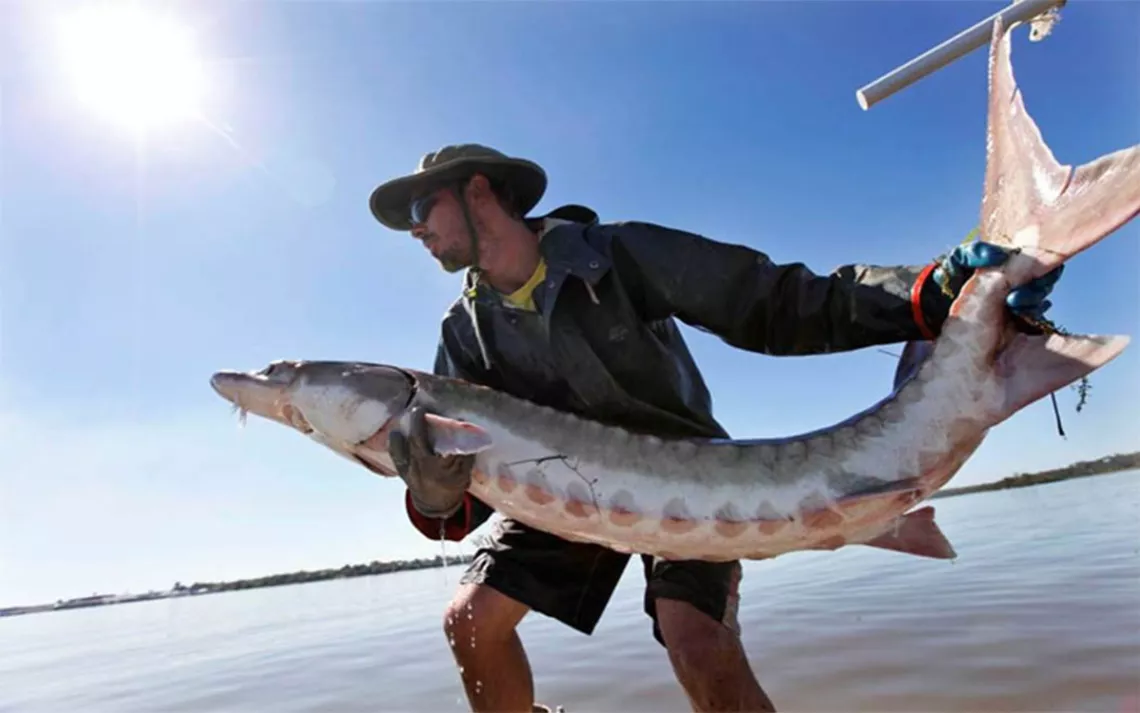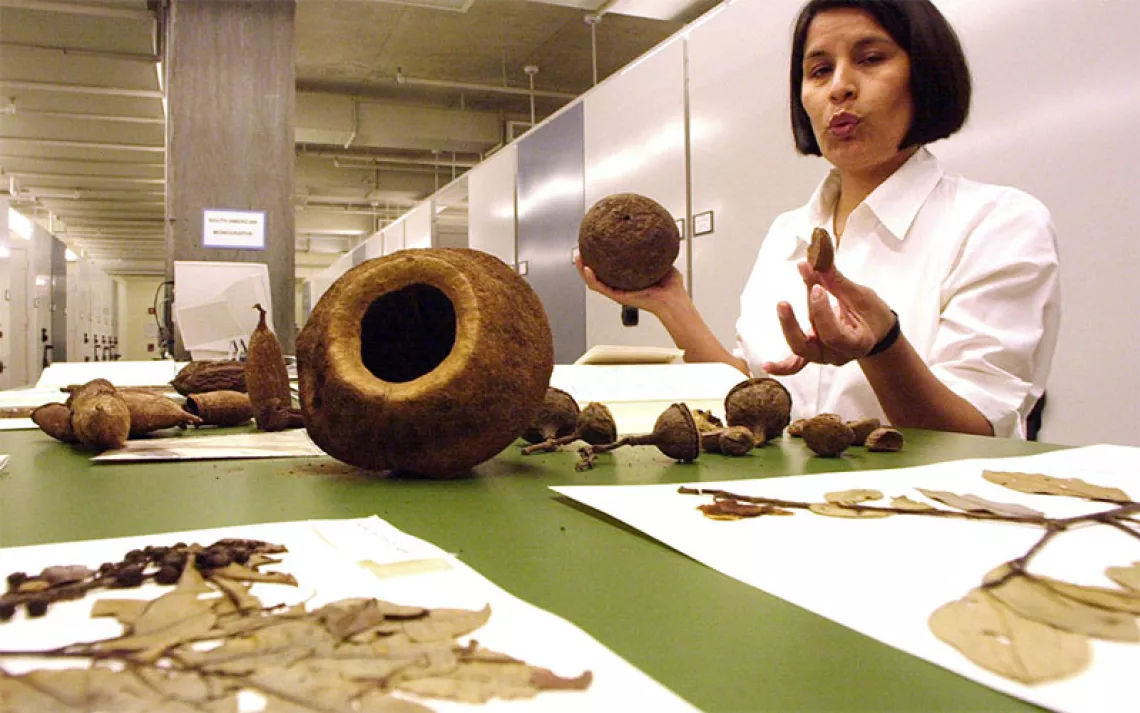The South’s Very Own Sea Monster
Atlantic sturgeon are nearly as old as the dinosaurs—and almost as rare

Photo courtesy of Matt Balazik
The scaly carcass that washed up on Folly Beach outside of Charleston, South Carolina, in 2012 had been baked a dusty brown by the caustic Southern sun and looked like that of some prehistoric beast. It took an expert from the South Carolina Aquarium to discern that it was actually an Atlantic sturgeon. The confusion was understandable; Atlantic sturgeon sightings are rare, and the similarity to a sea monster undeniable.
Atlantic sturgeon are “the largest, oldest, and coolest fish that most Atlantic coast residents are likely to see if they spend any time on coastal rivers,” says fish ecologist Gregory Garman, director of Virginia Commonwealth University’s Rice Rivers Center. Depending on your location, he says, sturgeon vary from rare to very rare. Even though these ancient mariners can reach 800 pounds and 15 feet in length, they’re hard to track in the ocean because they rarely take bait, they tend to travel alone rather than in schools, and their numbers are critically low. Most sightings occur in tidal freshwater when adults are seen jumping out of the water, or “breaching,” while swimming upstream to mate.
When colonists settled in the Southeast and mid-Atlantic region, Atlantic sturgeon were common and their salty caviar became a highly prized commodity among the European elite. Smoked sturgeon also became a staple in the Northeast. But by the second half of the 19th century, commercial fishing nearly resulted in the sea giant’s extinction. It took less than half a century to almost completely wipe out a species that has been around for 85 million years. “In the fossil record, [sturgeon] do not quite overlap with the age of dinosaurs,” says Garman, “but they have been around a very long time.”
Today the sturgeon’s population is less than 1 percent of what it was a century ago. Sturgeon fisheries were shut down in the 1980s, but threats to the species still persist. These include loss of river habitat, incidental take by other fisheries, and ship strikes, according to Lynn Lankshear, sturgeon recovery coordinator for the National Oceanic and Atmospheric Administration. Currently, five species of Atlantic sturgeon are categorized as either endangered or threatened along the Atlantic coast. In September 2017, NOAA designated critical habitats for the creature in the Gulf of Maine, New York Bight, Chesapeake Bay, Carolinas, and the South Atlantic.
A critical-habitat designation isn't the same as a wildlife refuge or a preserve, Lankshear says, but it does restrict federal actions, funding, or permitting that could harm the sturgeon’s habitat. This is important, she says, because habitat loss is a huge issue for the sturgeon’s future. Dredging projects, land development, and operations of dams can alter or destroy the estuarine water quality that sturgeon need to successfully reproduce.
The critical-habitat designations do have their naysayers, who fear that their restrictions on land use could result in economic loss. An amendment to the House appropriations bill introduced by Representative Andy Harris (R-Md.) would prohibit any funds in the bill from being used to implement or enforce this designation in the Chesapeake Bay.
The House appropriations process is ongoing, and it’s difficult to know what will become of Harris’s amendment. That aside, scientists do have some reason for cautious optimism. Within Chesapeake Bay waters, biologists have recently discovered small populations in Virginia and Maryland rivers that were assumed to no longer harbor the sturgeon. “These recent assessments give us hope for the species' recovery,” Garman says.
 The Magazine of The Sierra Club
The Magazine of The Sierra Club



